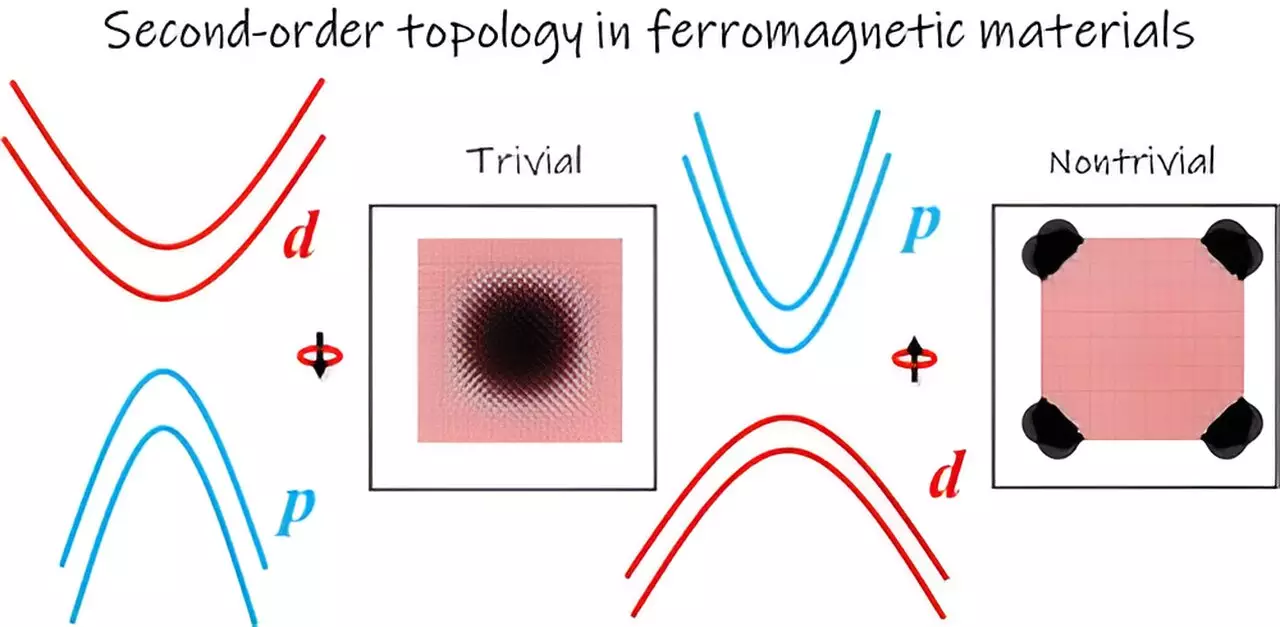The exploration of topological insulators has opened up transformative avenues in the field of materials science, particularly in spintronics—a domain primed to redefine data processing and storage paradigms. Recent advancements made by a research team from Monash University, affiliated with the FLEET Center, have shed light on intrinsic magnetic second-order topological insulators. This innovative class of materials is pivotal for enhancing the functionality of spintronic devices, which rely not only on electrical charge but also on the spin of electrons for information transmission.
Topological insulators are unique in their properties, exhibiting insulating behavior in their bulk while permitting conduction on their edges or surfaces. This counterintuitive characteristic arises from their topological characteristics, with three-dimensional examples like Bi2Se3 showcasing surface states comprising two-dimensional Dirac fermions. However, the emergence of second-order topological insulators expands this concept further, introducing (m-2)-dimensional boundary states within m-dimensional materials. For instance, a three-dimensional insulator might present one-dimensional hinge states or even zero-dimensional corner states.
The research under the guidance of Dr. Zhao Liu and Professor Nikhil Medhekar observed a novel phenomenon when studying intrinsic ferromagnetic semiconductors. These materials exhibit significant electron-electron correlations, which typically inhibit conventional interatomic communication, leading to characteristics akin to atomic insulators. The challenge, then, lies in marrying these intrinsic properties with topological features—a feat accomplished through innovative research techniques and insights into orbital interactions.
One of the crux discoveries of the study involves the formation of inverted p-d orbital arrangements in certain ferromagnetic semiconductors. Traditionally, ferromagnetic semiconductors possess an ordered structure where the p orbitals of the ligand anions are of lower energy compared to the d orbitals of the metal cations. However, the team discovered scenarios where some p orbitals had higher energy than the d orbitals, resulting in an inverted ordering. This critically alters the expected interactions and subsequently the resultant topological phase.
The implications are profound: materials exhibiting both inverted and normal p-d orbital arrangements can represent nontrivial and trivial topological phases respectively. This fluctuation enables the potential for discovering new states of matter and advancing understanding in quantum mechanics, particularly regarding how such states could function in practical applications.
Through rigorous assessments employing density-functional theory calculations and symmetry analyses, the researchers identified promising candidates for intrinsic magnetic second-order topological insulators, specifically 1T-VS2 and the CrAs monolayer. Each structure possesses distinct lattice arrangements—1T-VS2 featuring a hexagonal lattice and CrAs a square configuration. Crucially, the explorers noted that the spin-up channels in these materials supported inverted p-d orbitals, while the spin-down channels retained the conventional ordering, showcasing the dichotomy necessary for these materials to exhibit unique topological properties.
To probe these states further, the team’s application of spin-polarized scanning tunneling microscopy presents an exciting avenue for practical investigation. The distinct localization of these topological states at the corners of nanoflakes will empower researchers to conduct targeted experiments, thus paving the way for further discovery and validation of these groundbreaking materials.
The innovative research by the Monash University team not only reveals the intricate relationships between magnetic semiconductors and topological phases but also sets the stage for a new era in the development of spintronics. The potential extension of this work to include Kondo insulators, where d and f orbitals may similarly achieve complex topological ordering, promises exciting new materials to explore. As the field of spintronics continues to evolve, intrinsic magnetic second-order topological insulators could play a critical role in driving forward technological advancements, providing enhanced functionalities for next-generation electronic devices. The journey of uncovering and harnessing these materials has just begun, and the implications for future applications are boundless.


Leave a Reply